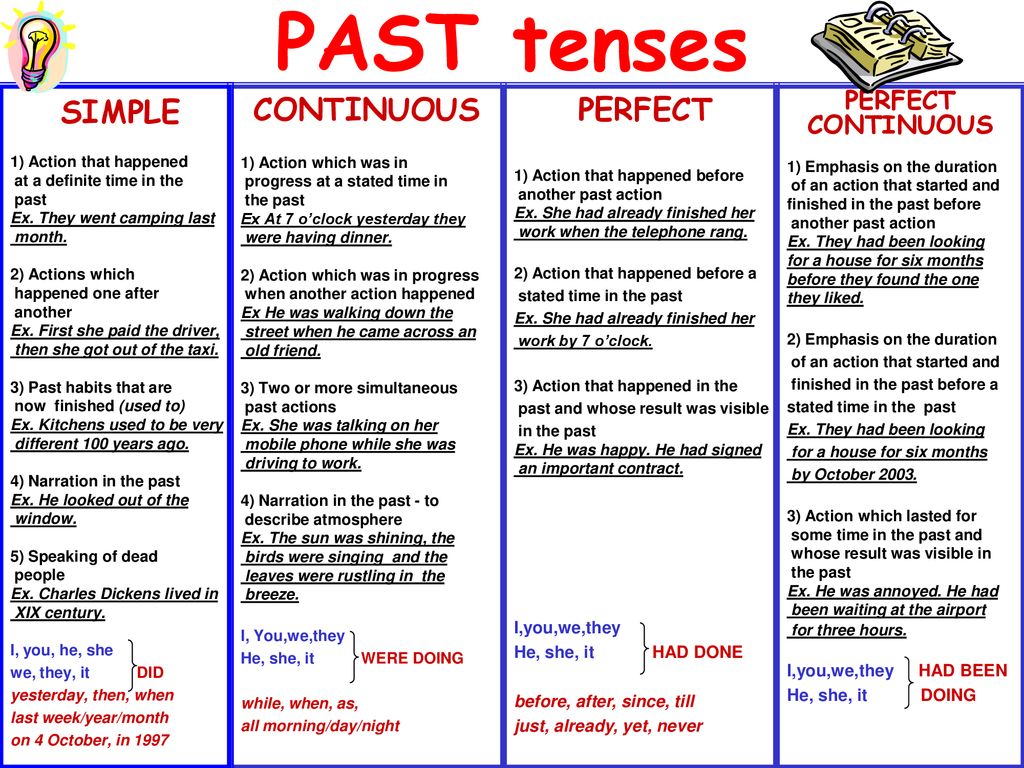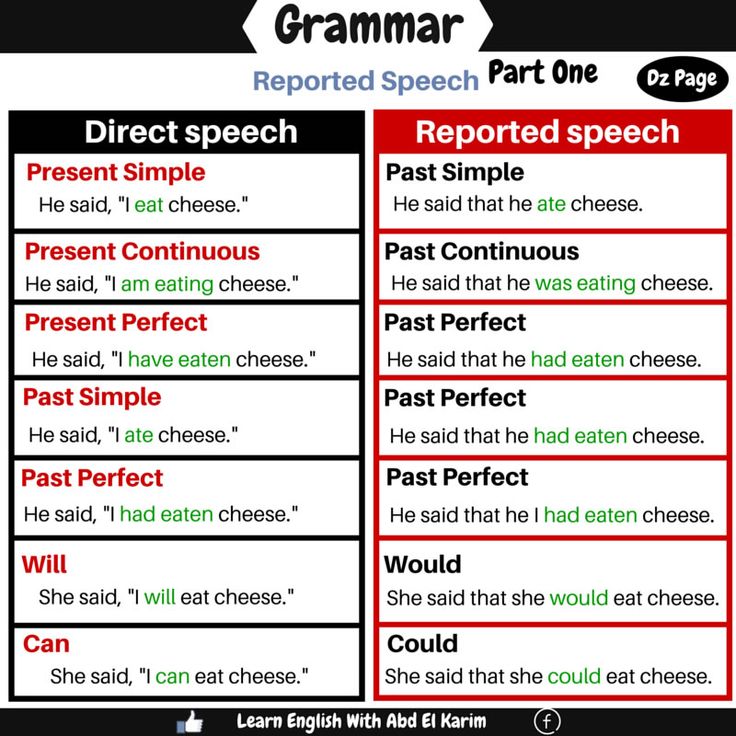How to unschool your child
How to Unschool - The Natural Child Project
by Pam Sorooshian
1. Give your love generously and criticism sparingly.
Be your children's partner. Support them and respect them. Never belittle them or their interests, no matter how superficial, unimportant, or even misguided their interests may seem to you. Be a guide, not a dictator. Shine a light ahead for them, and lend them a hand, but don't drag or push them. You will sometimes despair when your vision of what your child ought to be bangs up against the reality that they are their own person. But that same reality can also give you great joy if you learn not to cling to your own preconceived notions and expectations.
2. Provide a rich environment.
Unschooled children who grow up in a stimulating and enriched environment surrounded by family and
friends who are generally interested and interesting, will learn all kinds of things and repeatedly
surprise you with what they know. If they are supported in following their own passions, they will build
strengths upon strengths and excel in their own ways whether that is academic, artistic, athletic, interpersonal,
or whichever direction that particular child develops. One thing leads to another. A passion for playing
in the dirt at six can become a passion for protecting the natural environment at 16 and a career as
a forest ranger as an adult. You just never know where those childhood interests will eventually lead.
Be careful not to squash them; instead, nurture them.
3. Bring the world to your children and your children to the world.
Revel in what brings you together as a family. Watch TV and movies and listen to music and the radio.
Laugh together, cry together, be shocked together. Analyze and critique and think together about what
you experience. Notice what your child loves and offer more of it, not less. What is it about
particular shows that engage your child - build on that. Don't operate out of fear. Think for yourself
and about your own real child. Don't be swayed by pseudo studies done on school children.
4. Surround your child with text of all kinds and he/she will learn to read.
Read to them, read in front of them, help them, don't push them. Children allowed to learn on their own timetable do learn to read at widely divergent times - there is no right time for all children. Some learn to read at three years old and others at 12 or even older. It doesn't matter. Children who are not yet reading are still learning - support their learning in their own way. Pushing children to try to learn to read before they are developmentally ready is probably a major cause of long-term antipathy toward reading, at best, and reading disabilities, at worst.
5. It doesn't matter when something is learned.
It is perfectly all right for a person to learn all about dinosaurs when they are 40; they don't
have to learn it when they are 9. It is perfectly all right to learn to do long division at 16 - they
do not have to learn that at 9, either. It does not get more difficult to learn most things later; it
gets easier.
6. Don't worry about how fast or slow they are learning.
Don't test them to see if they are "up to speed." If you nurture them in a supportive environment, your children will grow and learn at their own speed, and you can trust in that process. They are like seeds planted in good earth, watered and fertilized. You don't keep digging up the seeds to see if the roots are growing - that disrupts the natural growing process. Trust your children in the same way you trust seeds to sprout and seedlings to develop into strong and healthy plants.
7. Think about what is really important and keep that always in the forefront of your interactions with your children.
What values do you hope to pass on to them? You can't pass on something you don't exemplify yourself.
Treat them the way you want them to treat others. Do you want respect? Be respectful. Do you want responsibility
from them? Be responsible. Think of how you look to them, from their perspective. Do you order them
around? Is that respectful? Do you say, "I'll be just a minute" and then take 20 more minutes
talking to a friend while the children wait? Is that responsible? Focus more on your own behavior than
on theirs. It'll pay off bigger.
8. Let kids learn.
Don't protect them or control them so much that they don't get needed experience. But, don't use
the excuse of "natural consequences" to teach them a lesson. Instead, exemplify kindness and
consideration. If you see a toy left lying in the driveway, don't leave it there to be run over, pick
it up and set it aside because that is the kind and considerate thing to do and because kindness and
consideration are values you want to pass on to your kids. Natural consequences will happen; they are
inevitable. But it isn't "natural" anymore if you could have prevented it, but chose not to
do so.
9. We can't always fix everything for our kids or save them from every hurt.
It can be a delicate balancing act - when should we intervene, when should we stay out of the way? Empathy goes a long, long way and may often be all your child needs or wants. Be available to offer more, but let your child be your guide. Maybe your child wants guidance, ideas, support, or intervention. Maybe not. Sometimes the best thing you can offer is distraction.
10. Be sensitive to your child's interest level.
Don't push activities that your child isn't interested in pursuing. Don't let your interests
dictate your child's opportunities. If your child wants a pet, be realistic and don't demand promises
that the child will take sole care for it. Plan to care for it yourself when the interest wanes. Do
it cheerfully. Model the joy of caring for animals. Model kindness and helpfulness. Help a child by
organizing their toys so they are easy to care for. Plan to care for them yourself much of the time,
but invite your child's help in ways that are appealing. If you act like you hate organizing
and cleaning, why would your child want to do it? Always openly enjoy the results of caring for your
possessions - take note of the extra space to play in, the ease of finding things you want, how nice
it is to reach into a cupboard and find clean dishes. Enjoy housework together and don't make it a battle.
11. Don't pass on your own fears and hates about learning anything.
If you hate or fear math, keep it to yourself. Act like it is the most fun thing in the world. Cuddle
up and do math in the same way you cuddle up and read together. Play games, make it fun. If you can't
keep your own negativity at bay, at least try to do no harm by staying out of it.
12. Don't try to "make kids think."
They will think; you don't have to make them. Don't use every opportunity to force them to learn something. They will learn something at every opportunity, you don't have to force it. Don't answer a question by telling them to "look it up" or by asking them another question. If you know the answer, give it. If you don't, then help them find it. Speculating about an answer often leads to a good conversation. If your child stops seeing you as helpful when they have questions, they'll stop coming to you with their questions. Is that what you really want?
13. When you offer a child choices, be sure they are real choices.
Offer them choices as often as you can. Try to limit the "have to's" as much as you can.
Frequently ask yourself, "Is this really a "have to" situation or can we find some choices
here?"
Pam Sorooshian and her husband, Cyrus, have three successful grown-up unschooled daughters, Roya,
Roxana and Rose. Pam is on the Board of Directors of the Home School Association of California and occasionally speaks at conferences
about unschooling. Her blog contains fun math-related
games and ideas as well as comments about unschooling. Pam teaches economics and runs the theater box
office at Cypress Community College in Southern California.
© Pam Sorooshian. Posted with permission of the author.
This article originally appeared as a posting on the Home School Association of California Yahoo group.
- All Articles
- Learning
How To Start Unschooling TODAY
Learn how to start unschooling for homeschool, a homeschool approach that allows freedom in in education and promotes child-led learning based on children’s interests with this nontraditional learning path.
How To Start Unschooling
If you’re just exploring the topic of unschooling or planning on a transition to unschooling from homeschooling, it can be intimidating because it seems like somewhat of an abstract concept.
I mean, what is unschooling homeschooling?
And, is there such a thing as an unschooling curriculum?
What are the disadvantages of unschooling?
And, more importantly, is unschooled legal?
Let’s start at the beginning…
What is the unschooling method?
Unschooling is style that falls under the umbrella of homeschooling. With unschool, a child is allowed to lead in their learning without necessarily following a specific homeschool curriculum. Children are allowed to follow their own interests and curiosities during unschool homeschooling.
For example, maybe your child is obsessed with rainbows. In unschooling, they would follow their interest and learn more about rainbows — checking out books from the library, watching documentaries on rainbows, doing some STEM experiments on reflection and refraction to make their own rainbows, bake a rainbow layered cake, create rainbow art and so much more.
A parents job in unschooling is to assist your child in what they need (resources, classes, etc.) to follow their interests.
There’s no one how to do unschooling way because every child is different!
LEARN MORE ABOUT THE UNSCHOOL MOVEMENT
New to homeschool? Start here: How To Home School Starting Now
How do I start unschooling?
- Check your state homeschool laws (or country’s homeschooling laws).
- Research and read unschooling books.
- Understand the differences in unschooling vs homeschooling.
- Deschool and let go of what you know about traditional school methods.
- Talk to your child about their interests.
- Provide books, games, and supplies that engage your child.
- Allow your child to lead in what they want to learn.
- Support your child in a mentor or facilitator role instead of a teacher role.
- HAVE FUN and remember that children learn naturally!
How can I legally unschool?
Homeschooling is legal in every state in America. Since unschooling is seen as a form of homeschooling, you can legally unschool in any state. However, homeschool requirements and laws vary by state. So, be sure to check your state laws.
How do I register for unschooling?
Unschool registration will depend on your state laws for homeschooling. In some areas, homeschoolers are required to register with the state, so follow the state’s guideline’s for homeschool registration and requirements. (You don’t need to call it “unschooling.”) Then, you can fit your state’s requirements into an unschooling schedule.
Here’s what contributor Anita Byler said about transitioning to unschooling:
WHY UNSCHOOL
Transitioning From Homeschooling to Unschooling: One Mom’s Personal Experience
When we started homeschooling, from a place of shame and insecurity I chose a homeschool curriculum popular among my public school friends.
I compared myself to others and was determined to keep my children moving at the same pace as their friends in public school.
But with a stubborn, independent first grader and a fourth grader with some dyslexic characteristics, I soon fell flat on my face.
Homeschooling is hard and failure was hard to admit.
And, it was even harder to relax enough to pick myself back up!
I knew what we were doing wasn’t working for any of us, but I was so scared to admit what that meant.
What it meant was that I had failed with scheduled homeschooling, and my family and friends would find out.
It also meant that I would have to figure out what next for us.
And, I’d have to learn to look at my children and education in a whole new light.
Letting Children Lead
I soon learned that children are wonderful teachers… if we take time to listen to them.
I started listening to my first grader and noticed she was so hungry and eager with questions and very determined to move at her own pace.
It was then that I swallowed my pride and refused to make her read.
When we did pick reading back up, we started in an area where she was very comfortable and chose books that were fun and easy.
Just the other day she told me “reading is kind of fun.”
My fourth grader, wounded and stunted from past school experiences, found no joy in books and seemed to have lost a lot of childish curiosity and creativity.
That’s when we changed homeschool up and really started to understand how to unschool.
We started taking things very slow.
We focused on learning the things she was interested in learning.
We turned new concepts into conversations and hands-on experiences and returned to some of the very basics of phonemic awareness.
I learned I was happy to “miss” a whole year of school with her, if her independence and love for learning would return.
And it did!
This year I’ve loved watching her independently pursue learning, scheduling her own work, and losing herself in a book.
YES, unschooling really works.
We became an unschooling family.
Also check out this related topic:
SURPRISING Benefits of Boredom in Learning
Flexibility of Unschooling
And, let’s not forget about the flexibility of being unschoolers.
Recently, we had a sick day.
Days like that are when the flexibility of unschooling is a benefit.
On that day, we finger painted.
We figured out how to make foaming soap with a recipe I found online.
We measured and calculated.
Later my little one (who hates spelling) made a detailed, written treasure hunt for her sister — all on her own!
Last Spring, at the ending of our school year, I wrote this poem.
It stands most for what I learned that year:
We’ve cleared off the table, put the books all away. We’re off to the real school of childhood play.
Under the table surrounded by chairs we’ll argue of whether we’re wolves or we’re bears.
Down by the creek on warm sunny days we’ll dive in the ocean to swim with the rays.
We’ll bandage a dolphin attacked by a shark. We’ll map out the country like Lewis and Clark.
Out under the trees my sister and me, lying in silence, will wait for the si. (Irish fairies)
Deep in the covers on dark stormy nights, my old viking ship will be in a plight.
Out in the puddles after the rain I’ll pole my gondola on a Venice lane.
While counting the birds and watching the sky I’ll dream of the day when I learn to fly.
We’ve loved all our books, and yes, we’ve had fun.
But now that it’s summer my learning’s begun.
Hand your children the knowledge and let them run with it!
Don’t constrain children to grade level, book lessons, or expectations.
How do Unschoolers Turn Out?
You may have come here looking for unschooling horror stories or unschooling failures or information to arm you with why unschooling doesn’t work.
If that’s the case, you’re probably disappointed because that hasn’t been our experience with unschooling.
There are so many opinions out there about unschooling homeschooling.
And, honestly, I haven’t even begun to wrap my head around everything unschooling means.
I just know what happens in our home when I relax enough to let my children learn the way they learn best… and for us, that was unschooling!
Contributor Anita Byler writes at Little Moments Great Joy, covering the life of a mom navigating the enormous world of homeschooling. You can also follow her on Instagram.
Unschooling Books
LET US KNOW YOUR QUESTIONS IN THE COMMENTS ABOUT HOW TO START UNSCHOOLING!
403 shares
As an Amazon Associate I earn from qualifying purchases. Please refer to our DISCLOSURE
STARTING HOME SCHOOL? CHECK OUT OUR HOW TO HOMESCHOOL GUIDE
How to teach a child to read: important rules and effective techniques
October 26, 2022 Likbez Education
Teaching a preschooler to read without losing interest in books is real. Lifehacker has selected the best ways for responsible parents.
How to understand that it is time to teach a child to read
There are several signs of psychological readiness.
- The child speaks fluently in sentences and understands the meaning of what is said. nine0012
- The child understands directions: left-right, up-down. For learning to read, it is important that the baby can follow the text from left to right and from top to bottom.
- The child distinguishes sounds (what speech therapists call developed phonemic hearing). Simply put, the baby will easily understand by ear where the house and the bow are, and where the tom and the hatch are.
- Your child pronounces all the sounds and has no speech problems.
Natalia Zharikova
Speech therapist with 33 years of experience
A child with speech therapy problems does not hear and does not distinguish similar sounds. From here come errors with speech, and subsequently with reading, and even more often with writing. It is very difficult for a parent to identify violations on their own, so usually a teacher or a speech therapist can point this out to them.
How to teach your child to read
Be patient and follow these simple guidelines.
Set an example
In a family where there is a culture and tradition of reading, children themselves will reach for books. Read not because it is necessary and useful, but because it is a pleasure for you. nine0003
Read together and discuss
Read aloud to the child and then look at the pictures together, encouraging them to interact with the book: “Who is this picture? Can you show me the cat's ears? And who is that standing next to her?” Older children can be asked more difficult questions: “Why did he do this? What do you think will happen next?"
Don't learn the letters as they are called in the alphabet
Instead, help your child remember the sound the letter makes. For example, you show the letter "m" and say: "This is the letter m (not em )". If a child remembers the alphabetic names of letters ( em , es, ef and so on), it will be quite difficult for him to learn to read. Then, when he sees the word ra-ma in the book, he will try to pronounce er-a-um-a .
Go from simple to complex
Once the child has memorized a few letters (from 2 to 5) and the sounds they represent, move on to syllables. Let the words consisting of repeated syllables be the first: mum, dad, uncle, nanny . In this case, it is not necessary to break the syllable into separate sounds. Do not say: "These are the letters m and a , and together they read ma ". Immediately learn that the syllable is pronounced like ma , otherwise the baby may start to read letter by letter. After mastering simple combinations, move on to more complex ones: cat, zhu-k, house .
Help to understand the meaning of what they read
Do this when the child begins to slowly but surely reproduce words and whole sentences in syllables. For example, the kid read: "Mom washed the frame." Stop and ask: “What did you just read about?”. If he finds it difficult to answer, let him read the sentence again. And you ask more specific questions: “Who washed the frame? What did mom wash? nine0003
Show that letters are everywhere
Play a game. Let the child find the letters that surround him on the street and at home. These are the names of stores, and memos on information stands, and advertising on billboards, and even traffic light messages: it happens that the inscription “Go” lights up on green, and “Wait so many seconds” on red.
Play
And play again. Stack blocks with letters and syllables, make up words, ask your child to read you some kind of sign or inscription on the packaging in the store. nine0003
Natalia Zharikova
There are many exercises for memorizing letters. For example, circle the desired letter among a number of others, circle the correctly written among the incorrect ones, color or shade. You can also ask the child to tell what the letter looks like.
Use every opportunity to practice
Whether you are waiting in line at the clinic or driving somewhere, take out a book with pictures and short stories to accompany them and invite your child to read together. nine0003
Build on your success
Repeat familiar texts, look for familiar characters in new stories. Runaway Bunny is found both in "Teremka" and "Kolobok".
Do not force
This is perhaps the most important thing. Don't take away a child's childhood. Learning should not go through violence and tears.
What techniques to use to teach your child to read
Here are six popular, affordable and effective techniques. Choose one or try several and choose the one that interests your child the most. nine0003
1. ABCs and primers
Frame: This is all mine / YouTube Traditional, but the longest way. The difference between these books is that the alphabet fixes each letter with a mnemonic picture: a drum will be drawn on the page with B , and a spinning top next to Yu . The alphabet helps to remember letters and often interesting rhymes, but will not teach you how to read.
The primer consistently teaches the child to combine sounds into syllables, and syllables into words. This process is not easy and requires perseverance. nine0003
There are quite a lot of author's primers now. According to the books of Nadezhda Betenkova, Vseslav Goretsky, Dmitry Fonin, Natalya Pavlova, children can study both with their parents before school and in the first grade.
Parents agree that one of the most understandable methods for teaching preschoolers is Nadezhda Zhukova's primer. The author simply explains the most difficult thing for a child: how to turn letters into syllables, how to read ma-ma , and not start naming individual letters me-a-me-a .
2. Zaitsev's Cubes
Shot: Little Socrates / YouTube If a child consistently masters letters and syllables while learning from an ABC book, then in 52 Zaitsev's Cubes he is given access to everything at once: a single letter or combinations of consonant and vowel, consonant and hard or soft sign.
The child effortlessly learns the differences between voiceless and voiced sounds, because the cubes with voiceless consonants are filled with wood, and the cubes with voiced consonants are filled with metal. nine0003
The cubes also differ in size. The large ones depict hard warehouses, the small ones - soft ones. The author of the technique explains this by the fact that when we pronounce to (hard warehouse), the mouth opens wide, nor (soft warehouse) - lips in a half smile.
The set includes tables with warehouses that the parent sings (yes, he doesn’t speak, but sings).
The child quickly masters warehouse reading with the help of cubes. But there are also disadvantages: he may begin to swallow endings and face difficulties already at school when parsing a word by composition. nine0003
3.
In "Skladushki" Vyacheslav Voskobovich reworked Zaitsev's idea: 21 cards show all the warehouses of the Russian language with nice thematic pictures. Included is a CD with songs, the texts of which go under each picture.
Folders are great for kids who like looking at pictures. Each of them is an occasion to discuss with the child where the kitten is, what the puppy is doing, where the beetle flew. nine0003
It is possible to teach a child with these cards from the age of three. At the same time, it should be noted that the author of the methodology himself does not consider it necessary to force early development.
"Teremki" by Voskobovich consist of 12 wooden cubes with consonants and 12 cardboard cubes with vowels. First, the child gets acquainted with the alphabet and tries with the help of parents to come up with words that begin with each of the letters.
Then it's time to study the syllables. In the tower with the letter M is embedded A - and the first syllable is ma . From several towers you can lay out words. Learning is based on play. So, when replacing the vowel , house will turn into smoke .
You can start playing tower blocks from the age of two. At the same time, parents will not be left alone with the cubes: the kit includes a manual with a detailed description of the methodology and game options.
4. Chaplygin's dynamic cubes
Shot: Both a boy and a girl! Children's channel - We are twins / YouTube Evgeny Chaplygin's manual includes 10 cubes and 10 movable blocks. Each dynamic block consists of a pair - a consonant and a vowel. The task of the child is to twist the cubes and find a pair.
At the initial stage, as with any other method of learning to read in warehouses, the child makes the simplest words from repeating syllables: ma-ma, pa-pa, ba-ba . The involved motor skills help to quickly remember the shape of the letters, and the search for already familiar syllables turns into an exciting game. The cubes are accompanied by a manual describing the methodology and words that can be composed. nine0003
The optimal age for classes is 4-5 years. You can start earlier, but only in the game format.
5. Doman's cards
Frame: My little star / YouTube American doctor Glenn Doman suggests teaching children not individual letters or even syllables, but whole words. Parents name and show the child the words on the cards for 1-2 seconds. In this case, the baby is not required to repeat what he heard.
Classes start with 15 cards with the simplest concepts like females and males . Gradually, the number of words increases, those already learned leave the set, and the child begins to study phrases: for example, color + object, size + object.
How can one understand that a child has understood and memorized the visual image of a word, if the author of the methodology recommends starting classes from birth? Glenn Doman in "The Harmonious Development of the Child" strongly emphasizes that it is not necessary to arrange tests and checks for the child: kids do not like this and lose interest in classes. nine0003
It's better to remember 50 cards out of 100 than 10 out of 10.
Glenn Doman
But given that parents can't help but check, he advises the child to play the game if they want and are ready. For example, you can put a few cards and ask to bring one or point to it.
Today, psychologists, neurophysiologists and pediatricians agree that the Doman method is aimed not at teaching reading, but at mechanical memorization of visual images of words. The child turns out to be an object of learning and is almost deprived of the opportunity to learn something on his own. nine0003
It is also worth adding: in order to proceed to the stage of reading according to Doman, parents need to prepare cards with all (!) Words that are found in a particular book.
6. Montessori method
Photo: Kolpakova Daria / ShutterstockMontessori reading comes from the opposite: first we write and only then we read. Letters are the same pictures, so you first need to learn how to draw them and only then engage in pronunciation and reading. Children begin by tracing and shading the letters, and through this, they memorize their outline. When several vowels and consonants have been studied, they move on to the first simple words. nine0003
Much attention is paid to the tactile component, so children can literally touch the alphabet cut out of rough or velvety paper.
The value of the method lies in learning through play. So, you can put a rough letter and a plate of semolina in front of the child and offer to first circle the sign with your finger, and then repeat this on the semolina.
The difficulty for parents is to purchase or prepare a significant amount of handouts. But you can try to make cards with your own hands from cardboard and sandpaper. nine0003
What's the result
On the Internet and on posters advertising "educators", you will be offered ultra-modern methods of teaching your child to read at three, two years old or even from birth. But let's be realistic: a happy mother is needed a year, not developmental classes.
The authors of the methods as one insist that the most natural learning process for a child is through play, and not through classes in which the parent plays the role of a strict controller. Your main assistant in learning is the curiosity of the child himself. nine0003
Some children will study for six months and start reading at three, others have to wait a couple of years to learn in just a month. Focus on the interests of the child. If he likes books and pictures, then primers and Folders will come to the rescue. If he is a fidget, then cubes and the Montessori system are better suited.
In learning to read, everything is simple and complex at the same time. If your child often sees you with a book, you have a tradition of reading before bed, your chances of getting your baby interested in reading will increase significantly. nine0003
See also 🧐
- How to teach a child to keep promises
- How to teach a child to say the letter "r"
- How to teach a child to ride a bicycle
- How to teach a child to swim
- How to teach a child to write
How to teach a child to read: techniques from an experienced teacher
At what age should you start teaching a child to read
Speech therapist Naya Speranskaya believes that the optimal age at which you can gradually start learning to read is 5. 5 years.
“But still, the starting point for the first steps in this matter should not be a specific age, but the child himself. There are children who are ready to master the skill as early as 3-4 years old, and there are those who “mature” closer to grade 1. Once I worked with a boy who could not read at 6.5 years old. He knew letters, individual syllables, but he could not read. As soon as we began to study, it became clear that he was absolutely ready for reading, in two months he began to read perfectly in syllables, ”said Speranskaya. nine0003
How to teach a child to read quickly and correctly
The first thing you need to teach your baby is the ability to correlate letters and sounds. “In no case should a child be taught the names of letters, as in the alphabet: “em”, “be”, “ve”. Otherwise, training is doomed to failure. The preschooler will try to apply new knowledge in practice. Instead of reading [mom], he will read [me-a-me-a]. You are tormented by retraining, ”the speech therapist warned.
Therefore, it is important to immediately give the child not the names of the letters, but the sounds they represent. Not [be], but [b], not [em], but [m]. If the consonant is softened by a vowel, then this should be reflected in the pronunciation: [t '], [m'], [v '], etc. nine0003
To help your child remember the graphic symbols of letters, make a letter with him from plasticine, lay it out using buttons, draw with your finger on a saucer with flour or semolina. Color the letters with pencils, draw with water markers on the side of the bathroom.
“At first it will seem to the child that all the letters are similar to each other. These actions will help you learn to distinguish between them faster, ”said the speech therapist.
As soon as the baby remembers the letters and sounds, you can move on to memorizing syllables. nine0003
close
100%
How to teach your child to join letters into syllables
“Connecting letters into syllables is like learning the multiplication table. You just need to remember these combinations of letters, ”the speech therapist explained.
Naya Speranskaya noted that most of the manuals offer to teach children to read exactly by syllables. When choosing, two nuances should be taken into account:
1. Books should have little text and a lot of pictures.
2. Words in them should not be divided into syllables using large spaces, hyphens, long vertical lines. nine0003
“All this creates visual difficulties in reading. It is difficult for a child to perceive such a word as something whole, it is difficult to “collect” it from different pieces. It is best if there are no extra spaces or other separating characters in the word, and syllables are highlighted with arcs directly below the word, ”the speech therapist explained.
According to Speranskaya, cubes with letters are also suitable for studying syllables - playing with them, the child will quickly remember the combinations.
Another way to gently help your child learn letters and syllables is to print them in large print on paper and hang them all over the apartment. nine0003
“Hang them on the refrigerator, on the board in the nursery, on the wall in the bathroom. When such leaflets are hung throughout the apartment, you can inadvertently return to them many times a day. Do you wash your hands? Read what is written next to the sink. Is the child waiting for you to give him lunch? Ask him to name which syllables are hanging on the refrigerator. Do a little, but as often as possible. Step by step, the child will learn the syllables, and then slowly begin to read,” the specialist said.
Speranskaya is sure that in this way the child will learn to read much faster than after daily classes, when parents seat the child at the table with the words: "Now we will study reading ..."
“If it is really difficult for you to give up such activities, then pay attention that the nervous system of preschoolers is not yet ripe for long and monotonous lessons. Children spend enormous efforts on the analysis of graphic symbols. Learning to read for them is like learning a very complex cipher. Therefore, it is necessary to observe clear timing in such classes. At 5.5 years old, children are able to hold attention for no more than 10 minutes, at 6.5 years old - 15 minutes. That's how long one lesson should last. And there should be no more than one such “lessons” a day, unless, of course, you want the child to lose motivation for learning even before school,” the speech therapist explained. nine0003
How to properly explain to a child how to divide words into syllables
When teaching a child to divide words into syllables, use a pencil. Mark syllables with a pencil using arcs.
close
100%
“Take the word dinosaur. It can be divided into three syllables: "di", "but", "zavr". The child will read the first syllables without difficulty, but it will be difficult for him to master the third. The kid cannot look at three or four letters at once. Therefore, I propose to teach to read not entirely by syllables, but by the so-called syllables. This is when we learn to read combinations of consonants and vowels, and we read the consonants separately. For example, we will read the word "dinosaur" like this: "di" "but" "for" "in" "p" The last two letters are read separately from "for". If you immediately teach a child to read by syllables, he will quickly master complex words and move on to fluent reading, ”the speech therapist is sure. nine0003
In a text, syllables can be denoted in much the same way as syllables. Vowel + consonant with the help of an arc, and a separate consonant with the help of a dot.
Naya Speranskaya gave parents a recommendation to memorize syllables/syllable fusions for as long as possible, and move on to texts only when the child suggests it himself.
“If a preschooler is not eager to read, then there is no need to put pressure on him. Automate syllables. Take your time. Learning should take place gradually, from simple to complex. The reading technique develops over time, ”added Speranskaya. nine0003
Another important clarification from the speech therapist: when the child begins to read words and then sentences, parents need to clarify the meaning of what they read.












